Official Australia Day website wipes January 26 ‘history’ section, references to British colonisation
January 26 represents a painful day in history for many — but it appears the official Australia Day body has opted to wipe that history altogether.
January 26 represents a painful day in history for many First Nations people — but for the official Australia Day organising body, it seems the solution is to literally erase that history altogether.
A new arrival to Australia, wanting to know more about the national holiday, may learn from the official Australia Day website that January 26 “is an important date” in the country’s history “that has evolved over time”.
But why is it important? And how has it evolved over time?
Anyone hoping that these vague allusions will be expanded upon will, it seems, have to search elsewhere for answers.
The National Australia Day Council (NADC), the government-owned not-for-profit which coordinates Australia Day events and the Australian of the Year Awards, has quietly stripped all mention of British colonisation and the history of the holiday itself from its website.
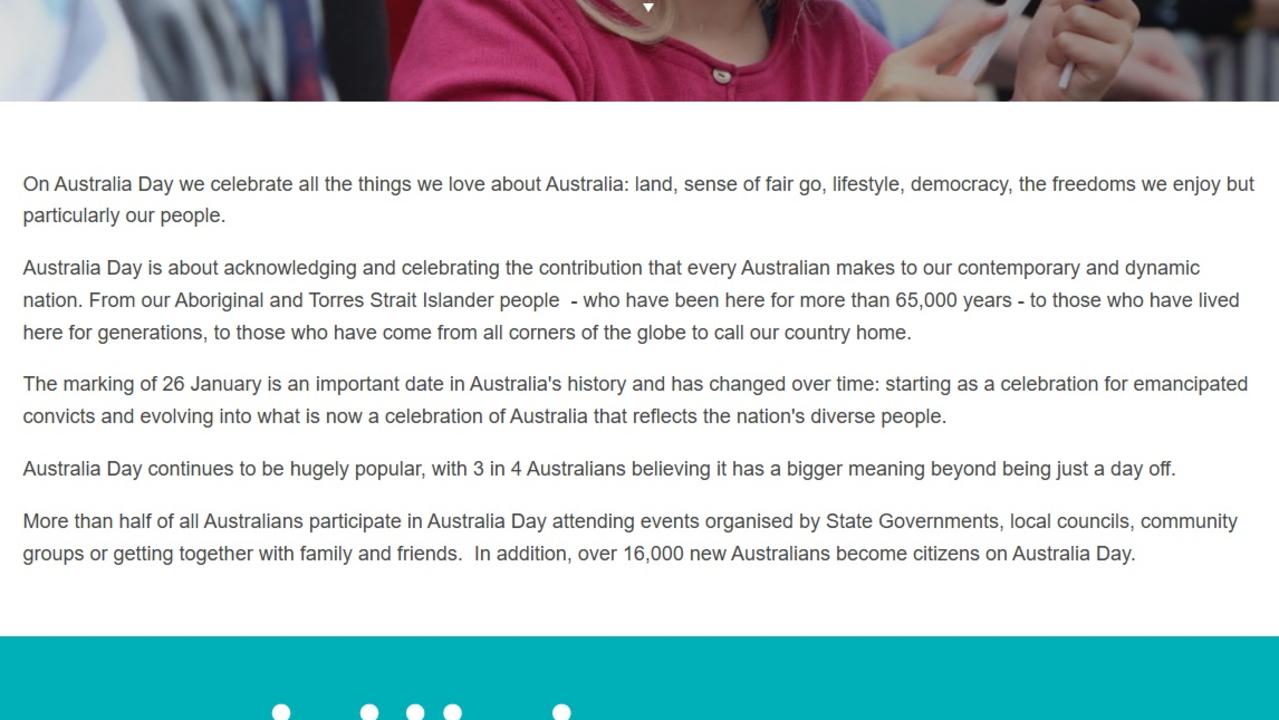
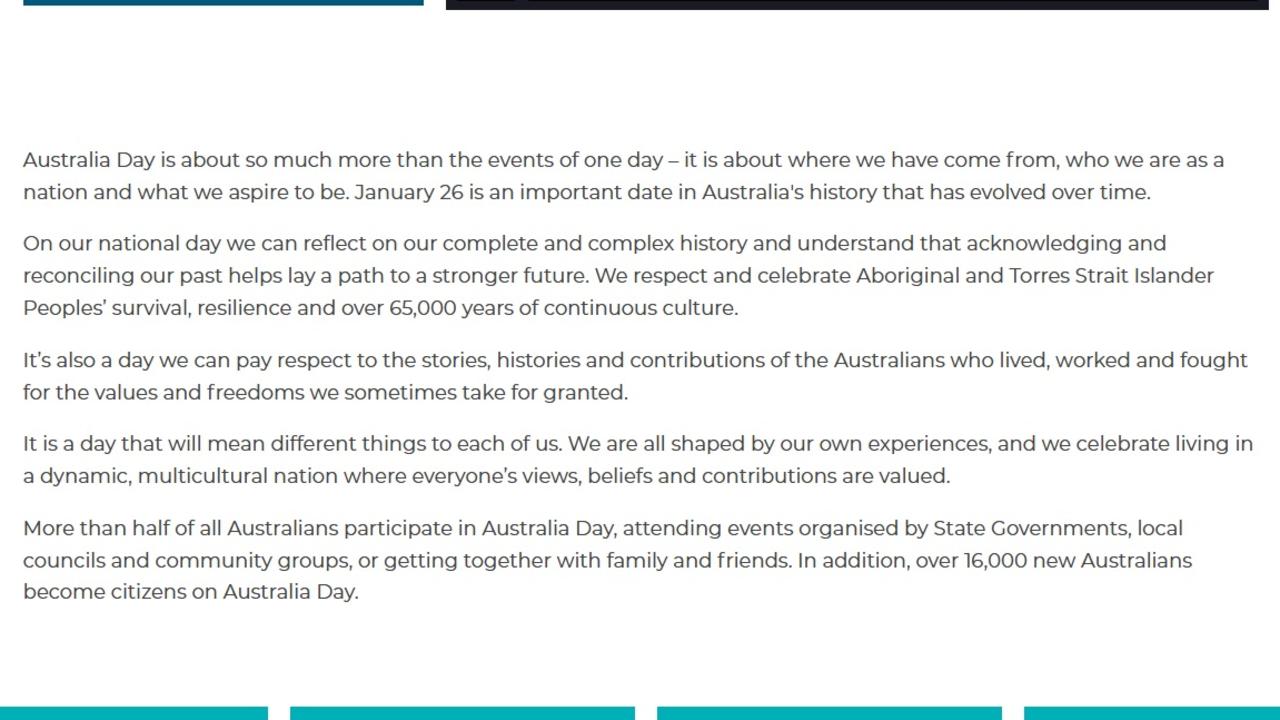
“The marking of January 26 is an important date in Australia’s history and has changed over time — starting as a celebration for emancipated convicts and evolving into what is now a celebration of Australia that reflects the nation’s diverse people,” the page previously read.
Today, the reference to “a celebration for emancipated convicts” no longer appears.
“Australia Day is about so much more than the events of one day — it is about where we have come from, who we are as a nation and what we aspire to be,” it now reads.
“January 26 is an important date in Australia’s history that has evolved over time. On our national day we can reflect on our complete and complex history and understand that acknowledging and reconciling our past helps lay a path to a stronger future. We respect and celebrate Aboriginal and Torres Strait Islander Peoples’ survival, resilience and over 65,000 years of continuous culture.”
But nowhere to be found on the website is any detail of that “complete and complex history”.
Internet archives show that in March 2022, the Australia Day website was updated to entirely remove the “history” section from the “about” page, which previously offered a timeline of January 26 compiled by Darwin-based historian Dr Elizabeth Kwan.

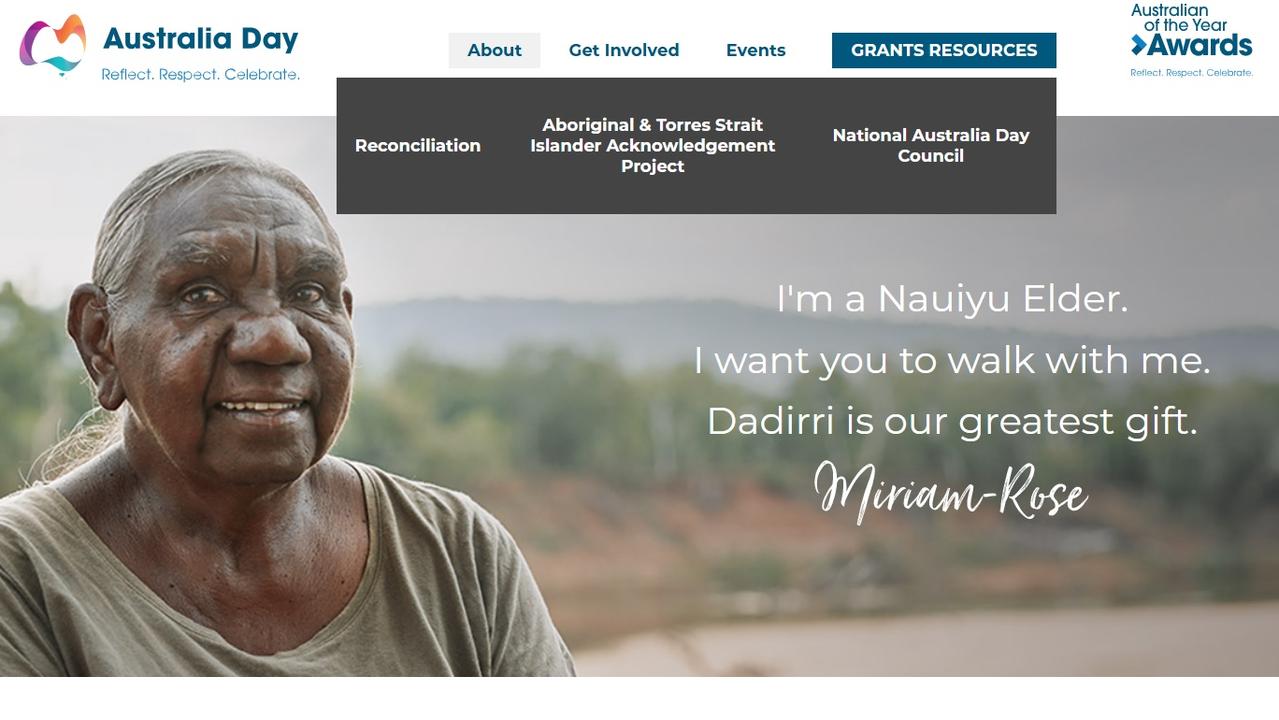
The since-deleted timeline began by acknowledging January 26 “has long been a difficult symbol for many Aboriginal and Torres Strait Islander people who see it as a day of sorrow and mourning”, noting that before 1770 “Aboriginal peoples had been living for more than 60,000 years on the continent we now know as Australia”.
It then laid out the key events, starting with Captain James Cook raising the Union Jack on Possession Island on August 22, 1770 and Captain Arthur Phillip arriving with the First Fleet at Port Jackson on January 26, 1788.
In the 1800s, “early almanacs and calendars and the Sydney Gazette began referring to January 26 as First Landing Day or Foundation Day” and in Sydney, “celebratory drinking, and later anniversary dinners became customary, especially among emancipists”, it read.
In 1818, NSW Governor Lachlan Macquarie officially acknowledged the day as a public holiday on the 30th anniversary, and by the late 1800s most of the colonies were celebrating the occasion.
Aboriginal leaders met in Sydney on Australia Day in 1938 for a “Day of Mourning” on the 150th anniversary, and in 1988, as the nation marked its bicentenary, 40,000 marchers protested at the first “Invasion Day” at Bondi.
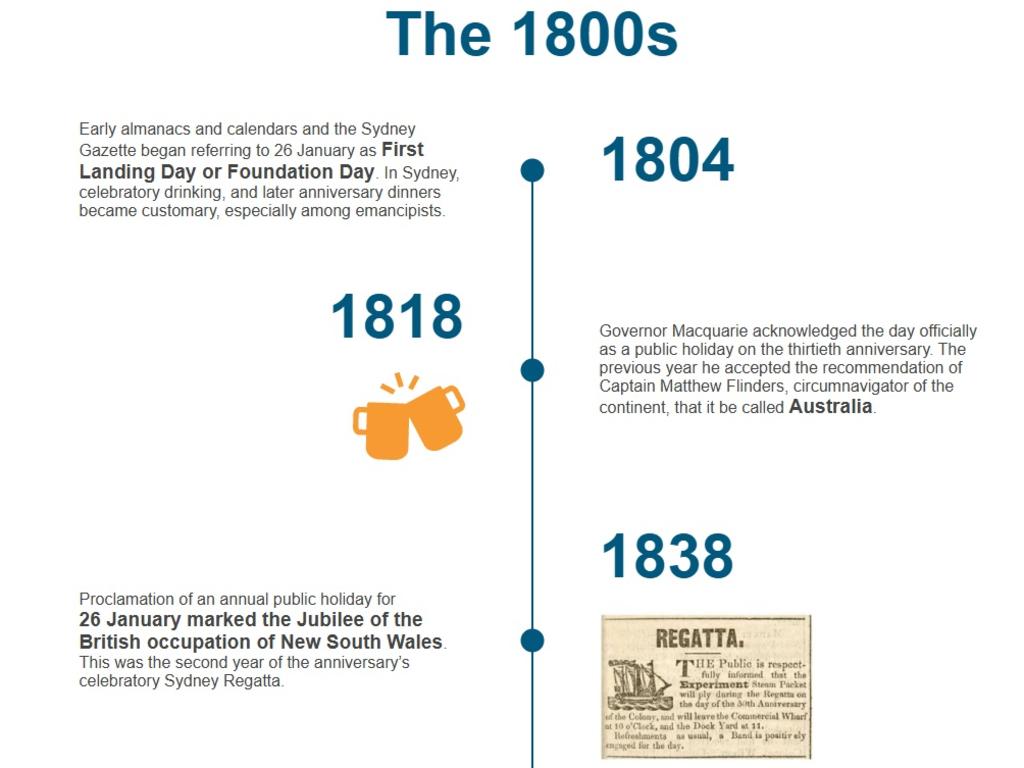
It wasn’t until 1994 that Australia Day was consistently recognised as a public holiday on January 26 itself, rather than a long weekend.
The timeline drew from a lengthy 2007 essay by Dr Kwan, commissioned by the NADC, titled Celebrating Australia: A History of Australia Day, which also used to appear in full on the Australia Day website before at some point being replaced with the abridged summary.
A spokesperson for the NADC confirmed that “significant updates to the website took place in 2022”.
“The website is regularly updated and refreshed with new program resources and to reflect current key messaging or campaigns in place,” they said.
“The NADC website itself does not seek to provide definitive historical resources or to provide an authoritative history of Australia Day, but instead seeks to actively promote our national day by providing information and resources that help inspire national pride and unity through our core programs — the celebration of Australia Day and encouraging all Australians to ‘Reflect. Respect. Celebrate’, the Australian of the Year Awards, Australian citizenship and civic values programs.”
The NADC said Dr Kwan’s essay was still “regularly quoted and referenced by the NADC in response to enquiries from the media or others with questions about the history of Australia Day”.

Debate over changing the date of Australia Day has escalated in recent years, with multiple councils opting to hold citizenship ceremonies outside of January 26 in 2025, while others vote to restore key ceremonies to the national holiday.
“There won’t ultimately be any resolution between people who have fundamentally different concepts of January 26,” CQUniversity historian Dr Benjamin Jones told NCA NewsWire last week.
“There is a greater sense of awareness that there are at least conflicted views.”
Speaking to SBS in 2017, Dr Kwan said there had been a growing realisation by the federal government after the post-World War II migration from Europe that it had to make the day more inclusive.
“There still had to be an acknowledgment that [Australia] had begun as a British settlement but there was a greater urgency to acknowledge the contributions that were coming from all over the world as well as from Indigenous Aboriginal Australians,” she said.
“So you find this growing attempt to balance celebration on Australia Day with reflection and education, so it saw quite a different side of Australia Day coming through.”
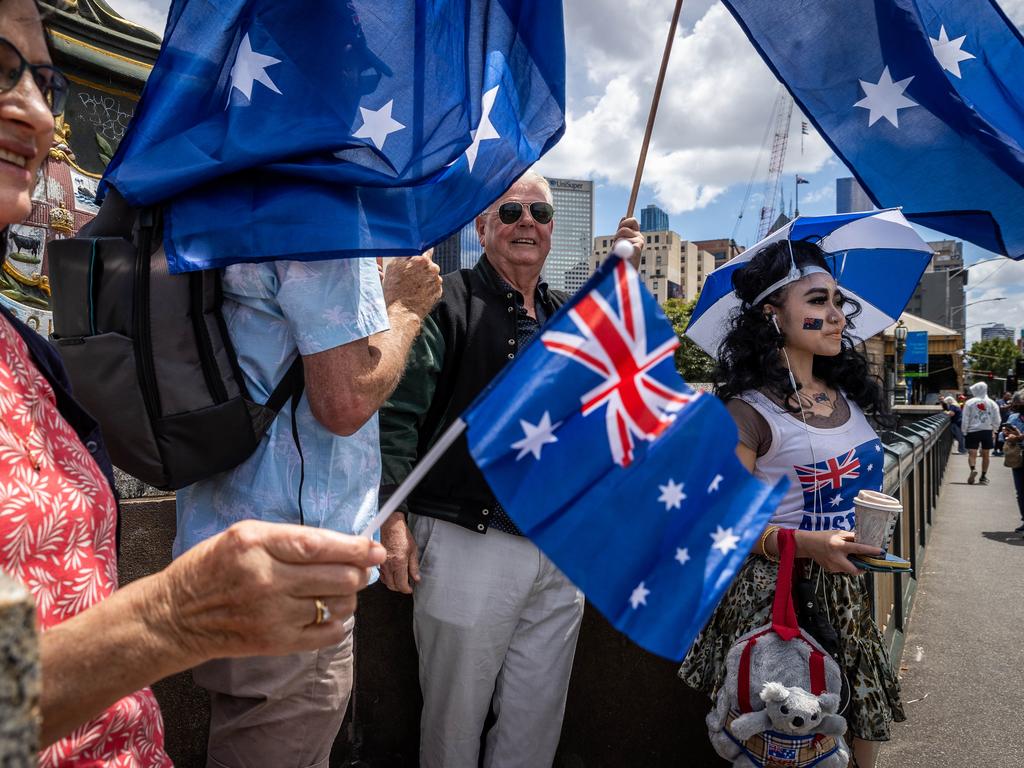
Today, the Australia Day website emphasises the occasion as one where Australians “come together to reflect, respect and celebrate with their communities”.
“It is a day that will mean different things to each of us,” it reads.
“We are all shaped by our own experiences, and we celebrate living in a dynamic, multicultural nation where everyone’s views, beliefs and contributions are valued.”
This year the federal government has provided more than $10 million in grants, administered by the NADC, for more than 750 “inclusive” Australia Day community events across the country.
“Australia Day gives us time to connect with family, friends and community — a day to celebrate the freedoms we share and the values and beliefs we hold,” Patrick Gorman, Assistant Minister to the Prime Minister and for the Public Service, said in a statement last month.
“It is a day to reflect on our complete and complex history, to acknowledge the past, and respect and celebrate Aboriginal and Torres Strait Islander Peoples’ history and continuing culture.”
Under the Community Events Grant Program, “eligible applicants were able to apply for a fixed grant of $10,000 to deliver inclusive events on our national day”.
“To encourage more inclusive and respectful engagement, an additional $5000 was made available for events that include significant Aboriginal and/or Torres Strait Islander elements,” Mr Gorman said.
“Grant-funded events by local councils and community groups are vital to representing the true diversity of Australia and to providing communities the opportunity to reflect, respect and celebrate their way.”






